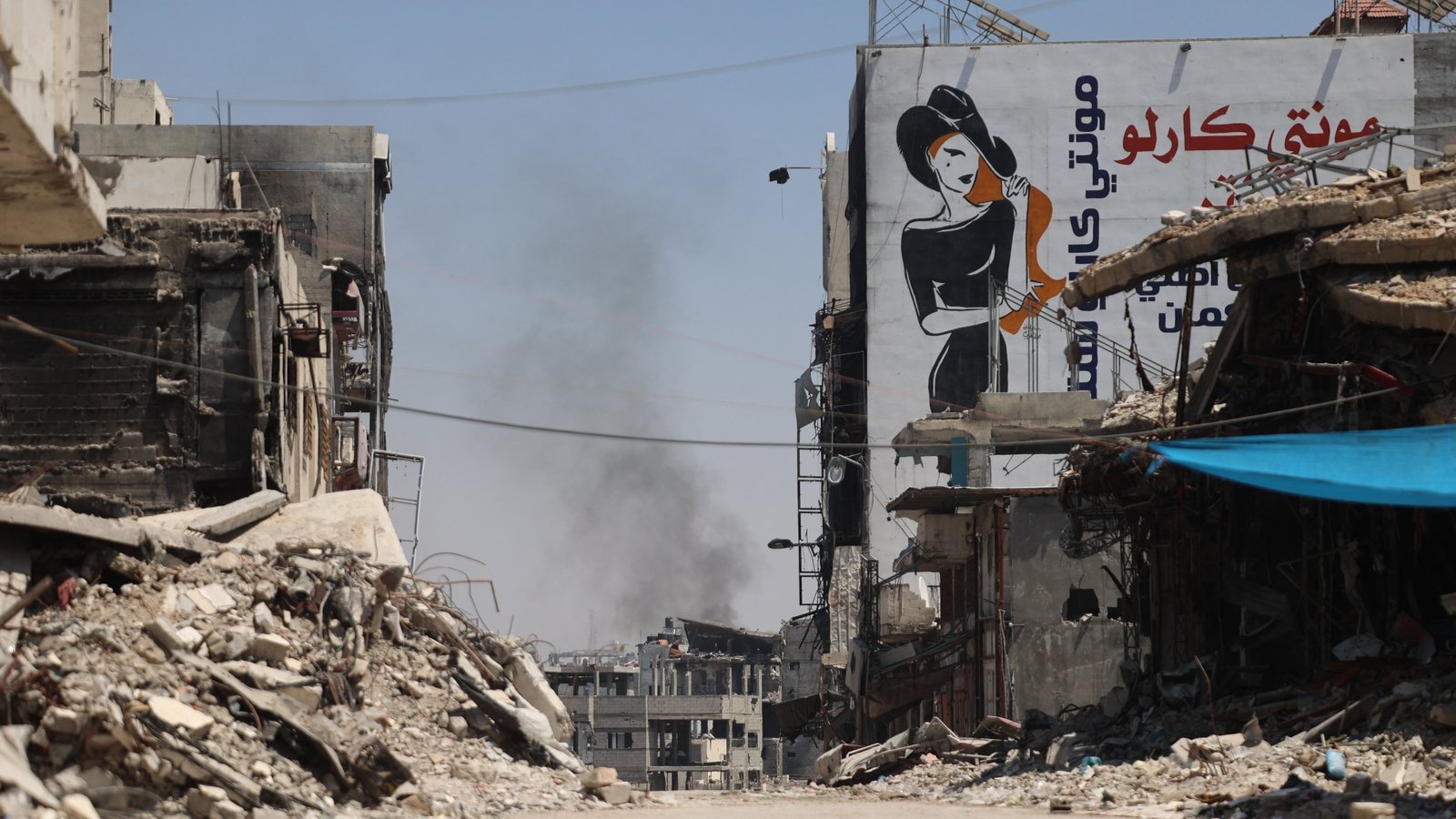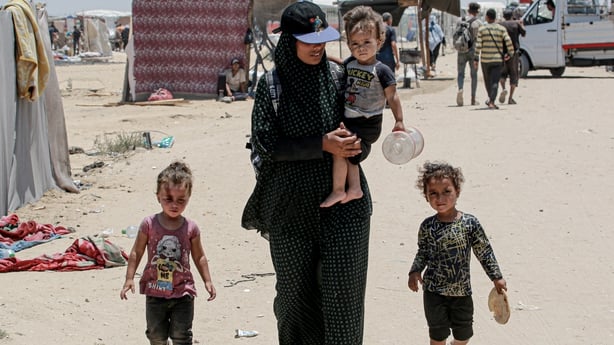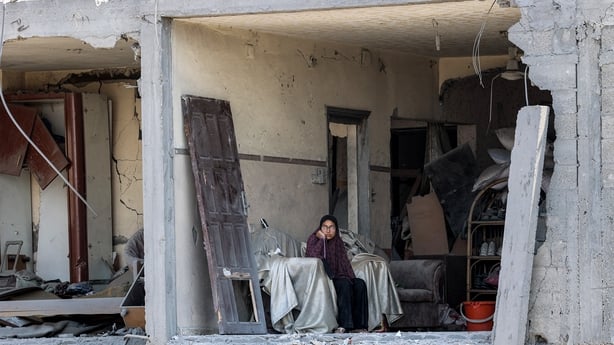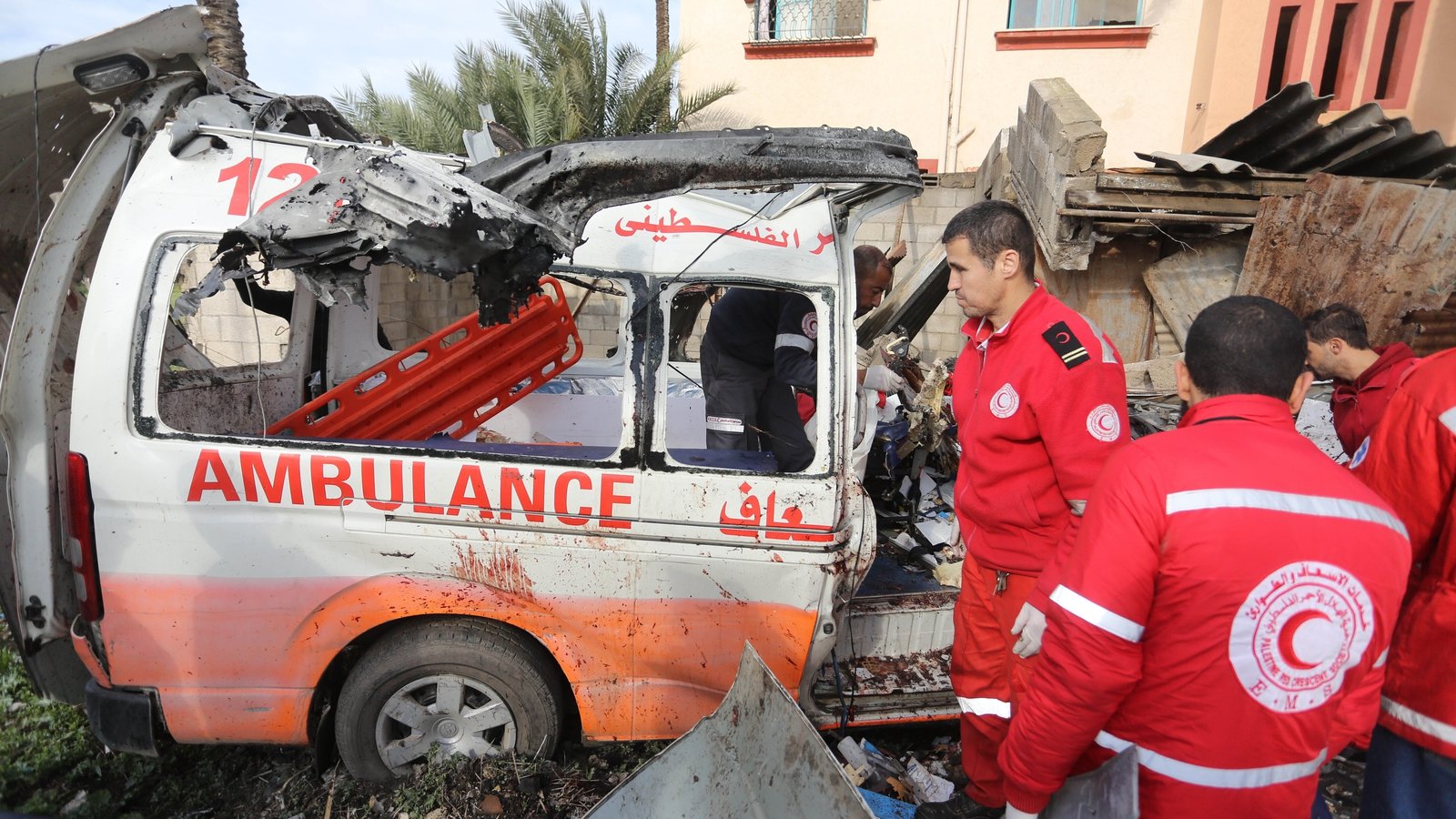Gazans living in ‘unbearable’ conditions

Gazans are forced to live in bombed-out buildings or camp next to giant piles of rubbish, a United Nations spokeswoman has said, denouncing the “unbearable” conditions in the besieged territory.
Louise Wateridge from UNRWA, the UN agency supporting Palestinian refugees, described the “extremely dire” living conditions in Gaza.
“It’s really unbearable,” she told reporters in Geneva, via video-link from central Gaza.
Ms Wateridge, who returned Wednesday after four weeks outside the territory, said that even in that time the situation had “significantly deteriorated”.
“Today, it has to be the worst it’s ever been. I don’t doubt that tomorrow again will be the worst it’s ever been,” she said.
Nearly nine months into the war between Israel and Hamas, Ms Wateridge said Gaza had been “destroyed”.
She said she had been “shocked” on returning to Khan Yunis in central Gaza.
“The buildings are skeletons, if at all. Everything is rubble,” she said.
“And yet people are living there again.
“There’s no water there, there’s no sanitation, there’s no food. And now, people are living back in these buildings that are empty shells,” with sheets covering the gaps left by blown-out walls.
With no bathrooms, “people are relieving themselves anywhere they can”.

Waste and rising temperatures ‘adding misery’
The war in Gaza started with Hamas’s 7 October attack on southern Israel, which resulted in the deaths of 1,195 people, mostly civilians, according to an AFP tally based on Israeli figures.
Israel’s retaliatory offensive has killed more than 37,700 people, also mostly civilians, according to data from the health ministry in Hamas-run Gaza.
Ms Wateridge said the struggle to bring fuel into Gaza and distribute it safely was having a knock-on impact on the ability to deliver aid.
“Without the fuel, the humanitarian response really grinds to a halt,” she said.
Ms Wateridge was speaking from a guesthouse as there was no fuel to go out and undertake missions.
About 150 metres away, she said, a pile of around 100,000 tonnes of waste was building up, with makeshift tents pitched all around it.
“The population is living among it,” she said. “With the temperatures rising, it’s really adding misery to the living conditions.”
Friends ‘unrecognisable’
Ms Wateridge said that before the war, sanitation units would clear all the trash from refugee camps to landfill sites.
Now, appeals to the Israeli authorities for access to the landfill sites were frequently denied, she said.
And lacking fuel meant even when access was granted, trucks could not go in to clear out the mess.
Ms Wateridge said food insecurity in the territory was having a visible effect on the population.
“When I see my colleagues, my friends here, they’re visibly unrecognisable because having such unsustained access to food for so long, you start to age, you look unhealthy, your skin changes colour,” she said.

Israeli forces push deeper into southern and northern Gaza
Meanwhile, Israeli forces have pressed their incursion deeper into two northern and southern areas of Gaza, and Palestinian health officials said tank shelling in Rafah killed at least 11 people.
Residents and Hamas media said tanks advanced further west into the Shakoush neighbourhood of Rafah, forcing thousands of displaced people there to leave their tent camps and head northward to the nearby Khan Younis.
The Israeli military did not immediately comment.
Since 7 May, tanks have advanced in several districts of Rafah, and forces remained in control of the entire border line with Egypt and the Rafah crossing, the only gateway for most of Gaza’s 2.3 million people with the outside world.
One resident, who spoke to Reuters via a chat app, said some bulldozers in the Shakoush area were piling up sand for Israeli tanks to station behind.
“Some families live in the area of the raid and are now besieged by the occupation forces,” he told Reuters.
“The situation there is very dangerous and many families are leaving towards Khan Younis, even from the Mawasi area as things became unsafe for them,” said the man, who moved northward overnight.
Arab mediators’ efforts, backed by the United States, have so far failed to conclude a ceasefire.
Hamas says any deal must end the war and bring full Israeli withdrawal from Gaza, while Israel says it will accept only temporary pauses in fighting until Hamas, which has ruled Gaza since 2007, is eradicated.





